The Characters Of The Batman, Ranked

Reinventions of famous superheroes are fairly common in the comics industry, where any given creative team can tackle a well-known character for some months and put their idiosyncratic spin on them. But they're far less common and far more time-consuming in Hollywood. A brand new spin on Bob Kane's Batman, say, would be the confluence of writers, directors, and studio heads -- and that's before you add a cast's performances, a composer's score, and a crew of hundreds' work to the fold. And all their work takes years to manifest. That's a lot of cooks and lot of time.
Maybe that's why Matt Reeves' "The Batman" feels borderline miraculous. The director's emo and grimy look at Bruce Wayne in his superhero-ing infancy goes down smooth, as if the character was always meant to be played by Robert Pattinson and tackling The Riddler reimagined as a serial killer. The role of grotesque stooge fits Colin Farrell's Penguin perfectly, and Jeffery Wright's James Gordon is a welcome shift from the equally great Gary Oldman and Pat Hingle renditions. Reeves' imagining of DC's flagship superhero is as invested in Batman as those who surround him, and each feels precision-tuned to realize a modern vision of Gotham and comic books movies that are in dialogue with all the work which came before hit. It is an uncommon pleasure.
Here are the characters of "The Batman," ranked.
19) Mayor Don Mitchell Jr.

When we first see Mayor Don Mitchell Jr. (Rupert Penry-Jones), he's playing with his son. When we next see Mayor Don Mitchell Jr., he's toying with Gotham citizens — pitting them against Candidate Rèal and praising the Renewal project on television. And y'know what's gross? There's little difference between these events. At their core, they're both power fantasies which Mitchell facilitates. He makes his son feel invincible and Gotham's people empowered. None of it is real.
Mitchell is a figurehead professing to be mayor, one installed by criminal forces and the preening Carmine Falcone. We come to learn that he's abusive. We learn that he's adulterous. There is no world in which Mitchell could be called good, either as a person or for his city; anyone who feels otherwise is living in a fantasy world of Mitchell's design -- even his son. Mitchell's the proof not only that "Renewal is a lie," but that Gotham as most know it is an illusion, as well.
Luckily, "The Batman" quickly dispatches of Mitchell and the many fictions that come with him. Both The Riddler and Matt Reeves' movie are most interested in exposing the lies that corrupt institutions, and Mitchell is less a character than a flesh and blood deception.
He's barely in "The Batman," but his brief appearance isn't playing around whatsoever.
18) Police Commissioner McKenzie

Con O'Neill plays acting Police Chief McKenzie, which is a win for the character of acting Police Chief McKenzie. The officer barely registers on paper, given that his two appearances in "The Batman" boil down to showing concern and consternation at Pete Savage's funeral then getting angry at the Batman moments later.
Luckily, O'Neill makes that anger glorious. McKenzie's temper is a leaking volcano that refuses to blow, dangerous but eerily restrained. When Gordon attempts to quell said temper -- plus those of The Batman and the officers who surround him -- it proves ineffective. And when The Batman snarls at McKenzie about police corruption, the portly officer strolls right up to the Dark Knight's face and growls in a hushed whisper, "You son of a b****."
This is the genius of O'Neill's performance encapsulated. It shows us that where Pete Savage was a brash, domineering blowhard, McKenzie is a quiet but equally violent blowhard. He doesn't interrogate The Batman when given the chance. He just judges him from the jump. That makes him a different strain of the same corrupting virus that's plagued Gotham, and the fact that O'Neill lets the audience in on that fact helps elevate the character beyond "ineffective cameo" status.
17) Police Commissioner Pete Savage
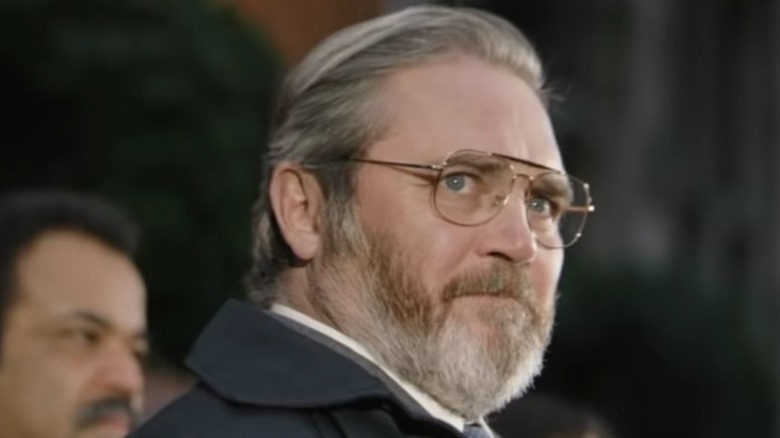
There is one wonderful detail about Police Commissioner Pete Savage (Alex Ferns) — he likes to work out alone. The blustering leader of Gotham City's PD doesn't like others to see him sweat, doesn't want anyone to smell the struggle or stress on him. There's a saying that the loudest one in the room is the weakest one in the room; Savage's hair-trigger temper and resistance to showing fragility suggest he is both thunderous and infirm.
More evidence of this fact is that Pete Savage is easily corruptible. As The Riddler graphically illustrates, Savage was in cahoots with both the mob and the man who ratted the Maroni family out. He didn't exercise good judgment. He didn't strengthen his moral character. Pete Savage never wanted anyone to see him for who he really was, and his resistance to the uncomfortable truth of who he was led to his downfall.
Sometimes simple details speak volumes.
16) The Twins

Many "The Batman" reviews note how dark it is. A cursory Google search pulls up the headers "The Batman Reinvents Itself Within The Darkness" and "Horrifying Darkest Knight is Barely A Superhero Movie." Which is why I feel compelled to report "The Batman" is a very funny film in spurts. The thumb drive joke is very funny. Selina Kyle lovingly shoving her angry cat into the back compartment of a motorcycle while it grumbles cutely is both cute and funny. Most importantly, The Twins are funny.
The Twins man the door at Penguin's Iceberg Lounge (and, by extension, 44 Below). There's a good recurring bit in which they open the door for either Batman or Bruce Wayne and find themselves on the receiving end of sucker punches despite their best efforts. But what makes The Twins good characters is how much their custodial obligations reveal about who they are. They're not scared of The Batman. Conversely, the two are in absolute awe when the soaking wet prince of Gotham shows up before them. That moment places Bruce in relation to Gotham's working-class more succinctly than any shot of Wayne Manor and, given that Batman's relationship to Gotham's people drives the movie's third act, it's a vital one.
Which also makes the Twins essential characters and comic foils, to boot.
15) Annika
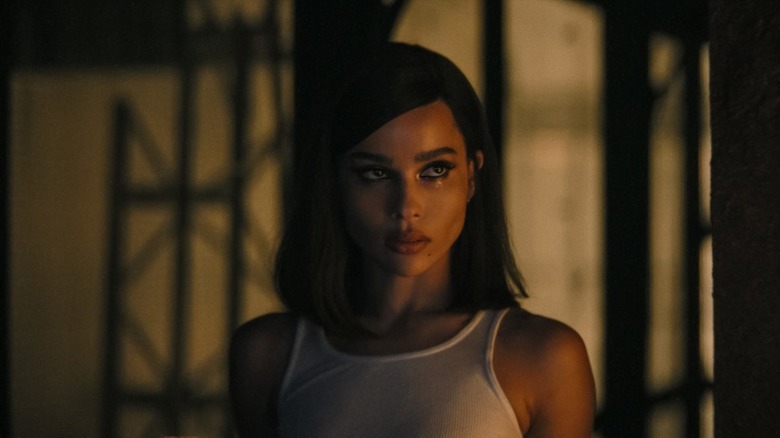
Perhaps the most tragic element of Annika's heart-shattering arc in "The Batman" is that she does nothing wrong.
Yes, Selina Kyle's roommate is complicit in adultery -- with the city's mayor, no less -- but there are complicated power dynamics at play there. What's more, there's no world in which Annika is deserving of the abuse she suffers at Mitchell's hands; she couldn't help being privy to the information spouted from Mayor Mitchell's lips about illicit deals with Falcone. So when confronted by Falcone himself, Annika makes the noble choice and tells her honest truth. That gets her strangled.
That's as bleak an arc as any in the Batman live-action canon, but it's overwhelming darkness has purpose. Annika's journey through Gotham's many circles of Hell represents the city's worst, and what its worst elements do to good people. She is why Batman fights for vengeance. And then, incredibly, her loss is a reminder to fight for more than justly-spilled blood. Batman lets his scars transform him into something more so people like Annika never suffer wounds to begin with.
Her time in "The Batman" is slight and sad, but her impact carries a depth-charge's power.
14) Kenzie
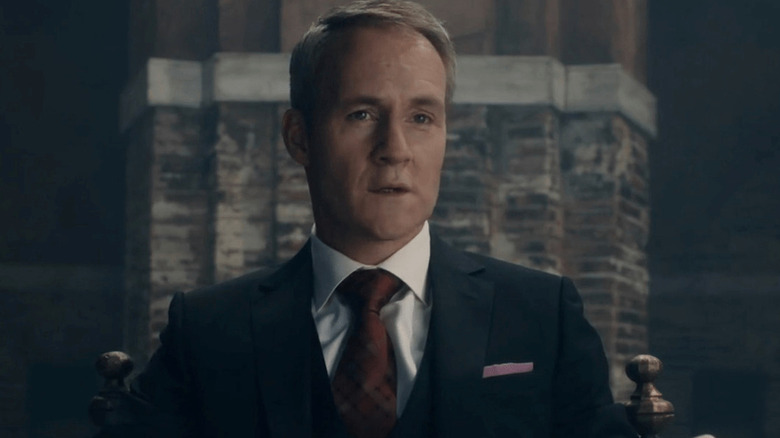
For Officer Kenzie, evil is a job. The Morbius-from-"Loki" lookalike isn't jonesing to cause any mischief — he's after money and work. So when the police department falls under Falcone's evil thumb, Officer McKenzie falls in line. When The Batman comes to take names at The Iceberg Lounge, Kenzie is there to draw his gun and get his nose broken. As if this all weren't banally awful enough, Kenzie is the one running money for Penguin's Drops deal and carting Annika's corpse to an unmarked grave. It's a living.
So if Kenzie's so blasé and awful, why does he rank among the middle-tier characters of "The Batman?" Because he's blasé and awful. Power corrupts and it corrupts absolutely. That doesn't always look like an acid-wielding clown or live-streaming terrorist; in the case of Kenzie, it looks like a two-bit stooge with two jobs, both malicious.
He's the worst and, also, a wonderful character.
13) Riddler's Followers

Christopher Nolan's "Dark Knight" trilogy is chock full of surprising moments, but one of the best comes early in 2008's "The Dark Knight," when the heinous deeds of Scarecrow are interrupted by a pistol-packing Batman. This clearly isn't Bruce Wayne and, for a second, the distorted iconography makes one's head spin. The Batman doesn't bear arms, but it's easy to see how a Batman might. The line from A to B is minuscule.
So when Riddler's followers upgrade from carpet tools and duct tape to high-powered rifles in "The Batman," the moment's both chilling and expected. Those who court influence don't have a say in how that influence may manifest. The Batman had influenced Riddler. Riddler sways his followers. And the goons who dress just like him oversee a hostile takeover of Gotham Square Garden as it fills with water and bodies, looking to mow down all who oppose them. It takes this disgusting chain of evidence to awaken Batman to his actions, even before one echoes his own words back at him directly ("I'm vengeance").
That doesn't make them the film's most interesting characters, but it arguably makes them the most important and most surprising.
12) Unnamed Arkham Inmate
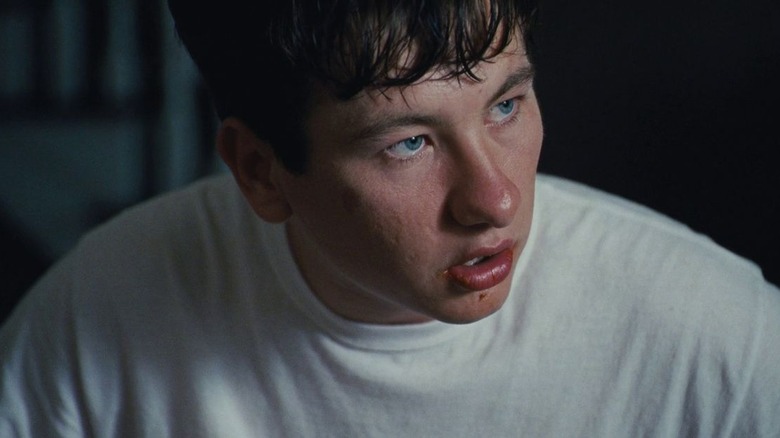
Speaking of surprises.
I don't think anyone expected "Unnamed Arkham Inmate" to show up at the end of "The Batman." Matt Reeves' film was already flush with rogues, and even with comic book movies' "post-credits scene" proclivities, an appearance by (spoilers) The Joker wasn't something we expected. But as it turns out, the original cut of "The Batman" featured even more Joker (and may not even be a sequel tease). That's almost as surprising as the character's appearance.
And it's really the way Joker is handled in "The Batman" that lands him about halfway up this list. What could have been the cinematic equivalent of a climatic splash page is instead an artful portrait of psychosis. For one, Reeves takes care not to reveal the actor playing Joker (my friend and I guessed Andrew Garfield, another assumed it was Josh Gad). That lets the audience hone in not on the thrill of Joker's casting but the serpentine speech with which he charms and manipulates Riddler. That loquacious tongue already distinguishes the Barry Keoghan incarnation from Hamill, Leto, or Ledger's and instantly makes the character compelling.
For another, Keoghan's Joker could show up anywhere in the Reeves Bat-verse -- from the "Penguin" spinoff to the "Arkham Asylum" show to a feature-length "Batman" sequel -- and his appearance, appropriately, seems more like the start of a side quest than an all-out game-changer.
That's a refreshing approach to both The Joker and franchise filmmaking, period.
11) Bella Rèal
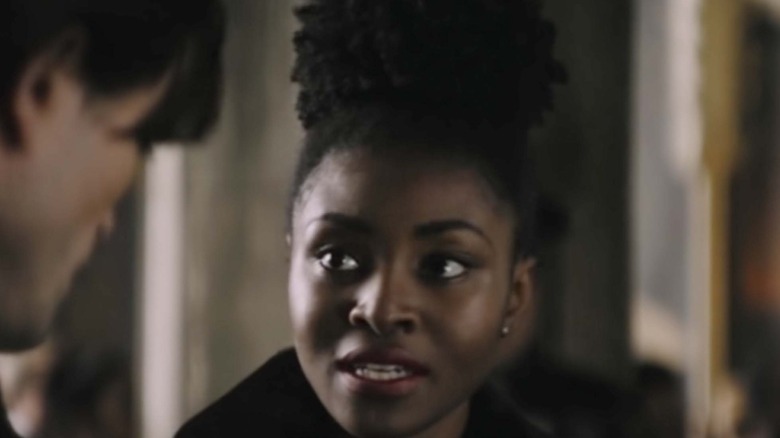
Bella Rèal (Jayme Lawson) is Gotham's latest shining hope. I say latest because any long-time viewer has seen hope come and go from Gotham in the form of multiple Harvey Dents, has watched the police force on "Gotham" beat down by rogue after rogue. Anyone who arrives in Gotham with ideals dies or lives long enough to see themself become a villain. And, during the third act of "The Batman," it appears Rèal is headed for death, not evildoing. She takes a bullet through the sternum having just been elected Mayor. Gotham's hope extinguished.
Except Rèal refuses to die, and this is part of what makes her such a tremendous character. Rèal is almost entirely defined by two facts: she's tenacious and she's a morally just woman of color in a sea of corrupt white male politicians. She has to fight harder than the Batman just to be heard, let alone survive. And we see her fight for Bruce's support, to become the Mayor of Gotham and, yes, even to stay alive. The film ends with her in charge of rebuilding Gotham's broken institutions. Gotham is, for once, in very good hands. There's reason to be hopeful.
10) Officer Martinez
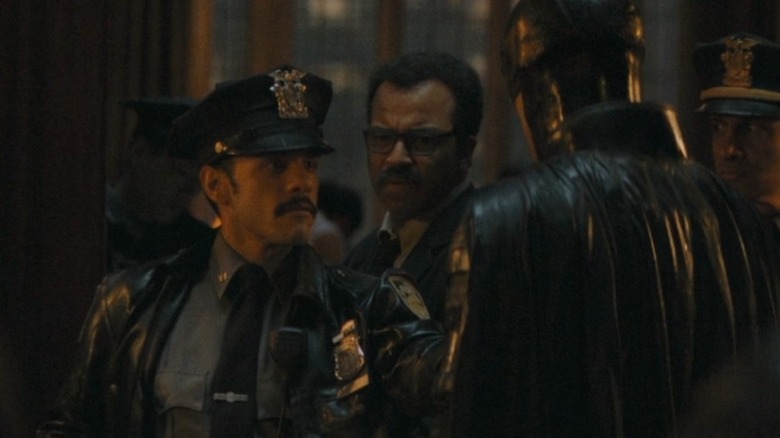
Officer Martinez (Gil Perez-Abraham) is the most underrated character in "The Batman." He appeared in almost none of the film's marketing and is only a minor part of its story, yet without him, the audience wouldn't see how public opinion is shifting towards The Batman's favor, nor would Batman solve The Riddler's puzzle. He delivers time and time again.
Even more importantly, he quietly reveals the blindspot of Bruce's privilege. Having confronted The Riddler and realized there's more to the madman's endgame, Batman returns to the site of Riddler's ledgers and trap devices. Martinez is guarding the site and allows Batman to enter. When the Caped Crusader starts going through Riddler's belonging and finds the carpet tool he used to kill Mayor Mitchell, Martinez correctly identifies the device. Bruce, who's never torn up carpet in his life, has no idea it's anything but a murder weapon.
That revelation leads to Riddler's "A Real Change" map and cements a dynamic that underscores the film's third act -- Batman is a hero for the people, not in spite of them. He needs the people. In the movie's opening, the commuter he saves from gang violence is as scared of him as the miscreants are. By the end, he is shepherding lost souls through Gotham Square Garden's troubled waters. And all of this winds up running through the story of one Officer Martinez.
Like I said -- the most underrated.
9) Gil Coulson

Gil Coulson's (Peter Sarsgaard) introduction to the world at large was a memorable funeral entrance, which is fitting because the Gotham City DA moves through life like he's already dead. If he isn't doing drops in the seedy confines of Falcone's 44 Below, Coulson is panicking over Riddler's murder spree. And beyond being panicked, the man seems deeply lonely. The weight of his choices and the target on his back have affected his relationships to his friends, family, and soul long before Riddler actually straps a deadly bomb to his neck.
Once he does, though, Coulson sacrifices himself to protect those friends and family we never see him with. "I'm a goner, anyway," he moans. It's a noble choice, in theory, but the reality is that Coulson lost those loved ones in his own life long before he shuffled off this mortal coil. There's no telling how good Coulson was or wasn't, but he epitomizes what happens to anyone who enters Gotham's political machine as-is: a swift and awful exit.
8) Alfred
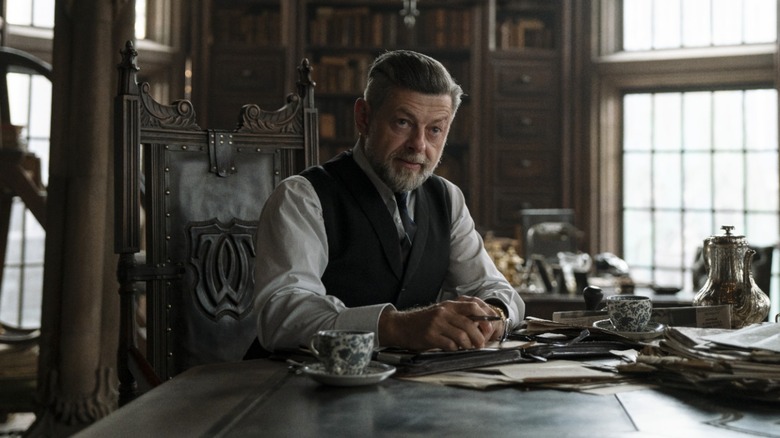
Alfred (Andy Serkis) cannot be the character we want him to be in "The Batman." That's by design. Every other iteration of Bruce's faithful butler (save the youthful spy of HBO Max's "Pennyworth") engages with a Bruce Wayne who's ready to love him, familially if not paternally. Not so with Robert Pattinson's Bruce. As envisioned by "The Batman," Bruce Wayne is a shell The Batman slips into. He's a disguise for undercover work and no part of the Wayne family legacy. Alfred is more than a butler, but here he has no one to serve in any sense. He works for a ghost.
Which is why it takes until the third act of Matt Reeves' film for the character to come into focus. In a hospital fighting for his life, Alfred presents a clear-eyed view of both Thomas Wayne and Gotham -- laying out the former's brush with corruption and the politics of a city all but built on social misdeeds. He judges no one. He is forthright and passionate. This is the Alfred Bruce has been unable to see and that he will come to need over the years that follow. Alfred holds out his hand; Bruce takes it. It's a lovely moment portending wonderful character development to come, but the lack of time spent with this Alfred lands him lower on our overall list.
7) The Riddler

During a third-act interrogation at the hands of The Batman, The Riddler (Paul Dano) gives his game away.
If you zoned out for any second during this scene, there's a serious chance you might have missed it, the key to understanding Paul Dano's Edward Nashton. The villain is bemoaning his orphaned upbringing and pontificating that Bruce Wayne could never understand what being orphaned is actually like. Wayne was still a millionaire, with or without parents. He never had to watch babies die from freezing orphanage temperatures or navigate young, foster-system abandoned drop-heads. Wayne's silver spoon is a sin.
The issue with that argument, though, is that a lack of parents makes you an orphan, period. Pain knows no economic class. Yes, Bruce's privileged situation offered some comforts in the wake of loss. But Bruce, like Nashton, became consumed by his own pain and turned it against the city which robbed him of his family. Nashton's done the same. But unlike Bruce, he's aggrandized that pain to the point of making it murderous. It fuels death traps and spurns on followers who adore him with cult-leader-like wonder. The Riddler thinks he's solved the key to his own life, but he, ironically, fails to see the bigger picture. And that blindness leads to the literal uprooting of Gotham.
Game over.
6) The Penguin
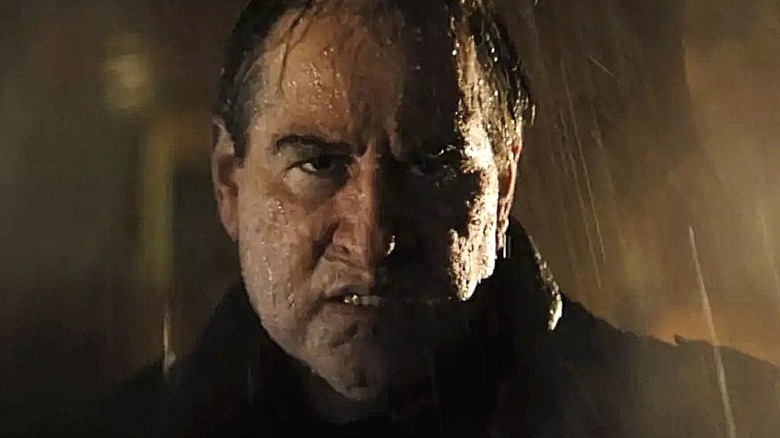
I've already written at length about The Penguin, so let me be clear: Oswald Cobblepot isn't the best character in this film, but he's unquestionably my favorite. Collin Farrell's take on the role once played by Danny DeVito and Robin Lorde Taylor is the film's most fascinating interpretation of the DC Comics' source material, portraying Cobblepot as an honest yet criminal stooge who everyone underestimates. And in a cool twist, that interpretation justifies why Farrell is the right man for the role.
There has been consternation about Farrell's casting since "The Batman" was announced, and that line of thinking continued after the film's release. That said, it's all hot air. The aesthetics of Farrell's Penguin hue closer to Warren Betty's "Dick Tracy" than they do anything from Christopher Nolan's "Dark Knight" trilogy, firmly establishing that Matt Reeves' movie takes place in a more elevated and comic-book-like world than our own. Sure, Reeves could've made up a more traditional character actor, but the effect wouldn't feel as extreme. The dissonance is necessary.
What's more, Farrell's Penguin is an underling who knows he can become the leading man of the Falcone's mega crime factory. Literally trapping Farrell under prosthetics and makeup brings the character's psychological reality to physical life. It's a deeply nifty trick, and one that illustrates just how layered and wonderful this particular Penguin is. The HBO Max show can't come soon enough.
5) Carmine Falcone

Halfway through strangling the life out of his daughter, Carmine Falcone (John Turturro) sweetly mutters "You made me do this." Of all the scary things that happen in "The Batman" -- from terrorist attacks to murders by vermin -- this is unquestionably the scariest. In this one moment, the self-justification that fuels Falcone and his whole empire sit naked in the spotlight. Do what you want, when you have to. And when it's convenient? Blame somebody else.
In essence, the Falcone of Matt Reeves' "The Batman" is Howard Ratner from "Uncut Gems" if he bet on himself for three-plus decades and won. Falcone has called his own shot for years. He turns informant for the cops and lives to tell about it. He gets shot and heads to the table of a goody-too-shoes mayoral candidate named Thomas Wayne, who sews him up and doesn't say a word. Falcone has been insulated from consequence enough to bet the proverbial house almost casually. That's why he murders Annika without seeing if she's called anyone. It's also why, when the tape of that murder leaks, he isn't worried about taking the fall. Carmine Falcone will find someone to blame and plead his case until he goes to the grave.
If you've seen "The Batman," you know Falcone meets his end. But he almost does so proudly. Though confronted by the few cops who aren't on the GCPD payroll, Falcone is last seen tearing The Penguin down a peg. Do what you want, when you have to.
4) Thomas Wayne

Gotham is a city haunted by ghosts. Not in the literal sense, and yet: What else would you call Thomas Wayne, a man whose life and influence hang over every character in "The Batman" and the city they inhabit? Wayne is Bruce's father, and his death births Batman. Thomas Wayne campaigned on the Renewal project, an attempt to make Gotham more equitable for all that became a drug money slush fund. And Wayne's few actual indecencies -- burying his wife's history of mental illness, trying to put the fear of God in a nosey, on-the-take reporter -- become sins that haunt The Riddler and put him on the path to a murder spree.
In Matt Reeves' "The Batman," Thomas Wayne is omnipresent and fascinating. The film never judges his actions (even when its characters do), and the decisions he made ultimately set the stage for major sociological change. With Wayne's history brought into the light, Mayor Rèal can start Gotham over again from a more transparent foundation. Now knowing who his father was, Bruce is ready to be a hero. Thomas Wayne became the man in death that he wanted to be in life and that, as a fate, is just as haunting as he is.
3) Jim Gordon

During the second act of "The Batman," Jim Gordon (Jeffery Wright) and Batman meet at the Bat Signal. Realizing that neither one of them flipped it, they prepare to ascend the lift together. Gordon pulls out his gun. "No guns," Batman growls. Gordon stares incredulously at Batman for a moment before delivering the film's biggest laugh-getter: "...yeah, that's your thing, man."
The best comedy is rooted in truth and so is this moment -- Jim Gordon has seen enough to know when arms are called for. It's a belief his entire character is built on. Wright's Gordon is a beat cop who might be the only man who believes in the law in Gotham. Accordingly, he's seen some stuff. And that stuff has led him to partner with a vigilante who dresses like a bat. Gordon doesn't have to give up the core of who he is to do this. In fact, he refuses to.
What's refreshing about this Jim Gordon is his self-actualization. Gordon knows fully well that he's a good man trying to do make a difference in a city that has little place for him, but when he discovers a drug bust he worked on was corrupt, he's stunned he couldn't tell. We've never had a Jim Gordon that confident in the quality of his character, and it elevates this version to the finest that's been on screen yet.
2) Selina Kyle

"I have a thing for strays." This throwaway line, uttered after Batman asks Selina Kyle (Zoë Kravitz) about her many cats, cuts to the heart of who Selina Kyle is in Matt Reeves' "The Batman." Selina takes in those who are lost because she can take care of herself. When Selina Kyle starts to spiral, her claws come out and cause anyone within her vicinity pain, including her.
But Selena knows that all too well. It's what makes her consent to Batman's restraining touch so powerful and erotically charged, the reason Kravitz and Pattinson have been generating heat together from the first trailer to that Entertainment Weekly motion cover. These are not two heroes in love. They are two extraordinary people at different stages of self-actualization catalyzing intimate growth in each other.
That's a heck of a subtext to apply to The Bat and The Cat, and it mostly happens through Zoe Kravitz's incredible Selena Kyle. But happen it does. And it's nine whole lives' worth of excellent.
1) The Batman

Bruce Wayne is not a character in Matt Reeves' "The Batman." The Batman (Robert Pattinson) is. You can see the exact moment Bruce Wayne is reborn during the film's final act, when an unmasked terrorist dressed like the Riddler snarls "I'm vengeance" in the same empowered tone the Bat used five days earlier. Until that moment, Robert Pattinson is playing the Batman because, as Riddler correctly identifies, the mask lets us see who he really is.
And who is the Batman? He's actually more than vengeance, even when he doesn't know it. He's a novice in expert's clothing -- a young guy with enough of a death wish to leap off a building and try skygliding for the first time -- but also a world-class detective, one running laps around an entire police force. He is in pain so he doles it out. And he's surprisingly funny, even when he doesn't want to be ("Thumb ... drive"). This is a Batman to fear, to root for, to be confounded by and in awe of. He's a symbol on the verge of becoming a hero. Over the course of "The Batman," we see just how he does so. That makes Batman not only the film's best character, but the vehicle for a new sort of origin story. There's never been anything like it.
Read this next: The 11 Coolest Easter Eggs In The Batman
The post The Characters of The Batman, Ranked appeared first on /Film.
